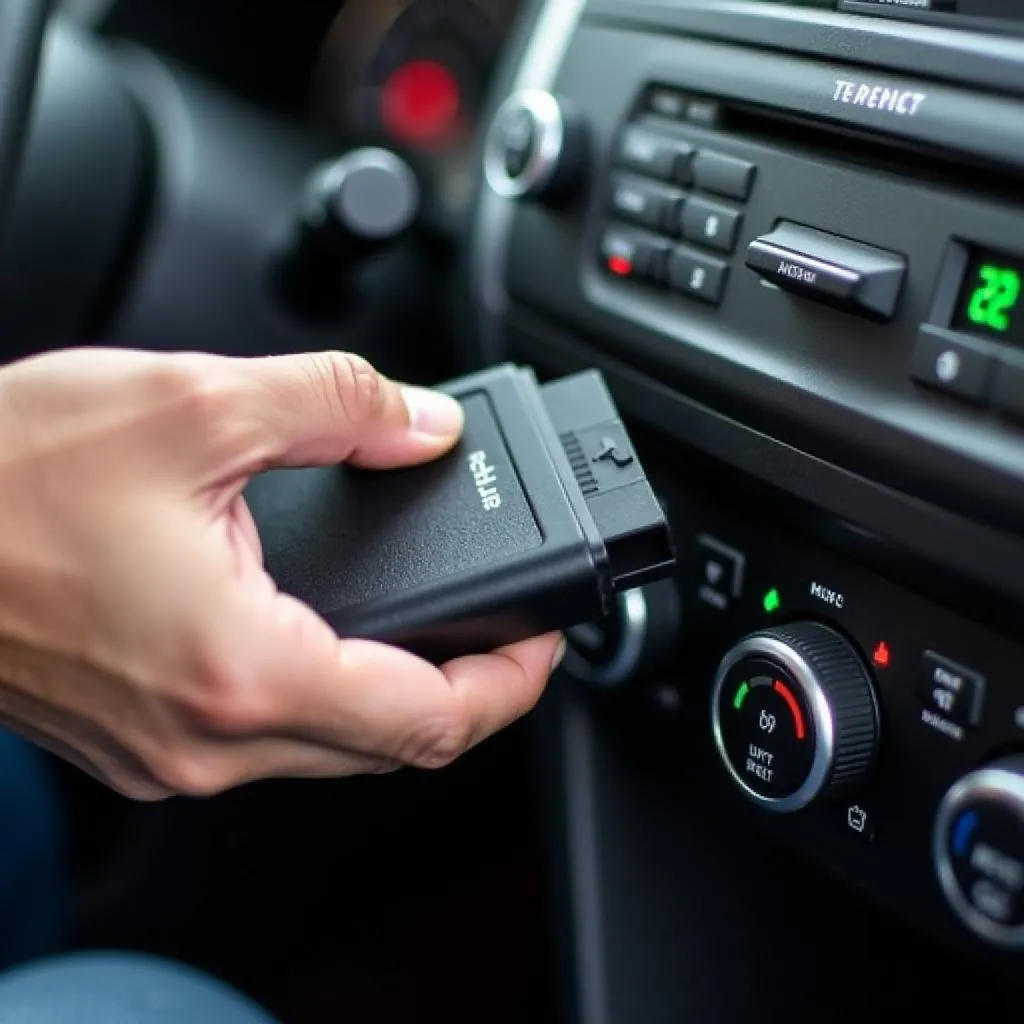A dead car battery can be a frustrating experience. Recognizing the bad battery signs early can save you time, money, and potential roadside emergencies. This guide explores the common indicators of a failing car battery, empowering you to address the issue proactively.
Identifying the Common Bad Battery Signs
Several symptoms can point to a failing car battery. Being aware of these bad battery signs is crucial for timely intervention.
-
Slow Cranking: One of the most noticeable bad battery signs is a slow engine crank. If your engine turns over slowly or struggles to start, your battery may be nearing the end of its life. This is often due to reduced cranking amps, the power surge needed to start the engine.
-
Dim Headlights: Dim or flickering headlights, especially when the engine is idling, can indicate a weak battery. The alternator should power the lights when the engine is running, but a bad battery may struggle to maintain sufficient charge.
-
Electrical Malfunctions: A failing battery might cause various electrical problems, such as malfunctioning power windows, interior lights, radio, or dashboard indicators. These issues can be intermittent or persistent, depending on the battery’s condition.
-
Clicking Sound When Turning the Key: A rapid clicking sound when you turn the ignition key but the engine doesn’t start often indicates a low battery charge. This clicking is the sound of the starter solenoid engaging but lacking the power to turn the engine over.
-
Swollen Battery Case: Physically inspect your battery for any signs of swelling or bulging. Extreme temperatures can cause the battery case to deform, indicating internal damage and potential leakage of hazardous battery acid.
“A swollen battery is a serious safety hazard,” says John Miller, a certified automotive technician at Miller’s Auto Repair. “The battery acid inside is corrosive and can cause burns. If you see a swollen battery, don’t attempt to jump-start the car. Have it replaced by a qualified mechanic immediately.”
Diagnosing and Addressing Bad Battery Issues
If you notice any of the above bad battery signs, it’s crucial to diagnose the problem accurately. A simple multimeter can be used to check the battery voltage. A fully charged battery should read around 12.6 volts. Anything significantly lower suggests a problem. Similar to signs of a bad car battery voltage, low voltage readings are a strong indication of a failing battery.
-
Testing the Alternator: While a bad battery is a common culprit, a faulty alternator can also cause similar symptoms. A simple test involves starting the car and checking the battery voltage with the engine running. A functioning alternator should charge the battery, resulting in a voltage reading of around 14.4 volts. If the voltage remains low, the alternator might be the problem. Further diagnosis can help differentiate between signs of bad battery or alternator to ensure accurate repairs.
-
Jump-Starting the Car: If you’re stranded with a dead battery, jump-starting can be a temporary solution. However, be cautious and follow the correct procedure to avoid damage. After jump-starting, drive the car for a while to allow the alternator to recharge the battery. If the problem persists, a replacement battery is likely necessary. The details of distinguishing between battery and alternator problems are explored in the article about signs of bad battery vs alternator.
Preventing Future Battery Problems
Several practices can help extend your car battery’s lifespan and prevent future issues. Regular maintenance, like cleaning the battery terminals and checking the electrolyte level, can significantly improve its longevity. Additionally, minimizing parasitic draws, such as leaving lights or accessories on when the car is off, can help preserve battery charge. This is especially important if you notice your car battery draining while parked.
- Proper Storage during Cold Weather: Extreme temperatures can negatively impact battery performance. In cold climates, consider using a battery blanket or trickle charger to maintain optimal temperature and charge. This is especially important if your car battery not charging while driving suggests a deeper issue with the charging system.
“Regularly checking your battery can save you a lot of trouble down the road,” advises Sarah Johnson, an automotive engineer with over 15 years of experience. “A simple voltage check can reveal potential problems before they escalate.”
Conclusion
Recognizing bad battery signs is essential for maintaining your vehicle’s reliability and avoiding unexpected breakdowns. By understanding the common indicators of a failing battery and taking proactive steps for diagnosis and prevention, you can keep your car running smoothly and avoid the inconvenience of a dead battery. Regularly checking for these bad battery signs can help extend the lifespan of your battery and prevent unexpected roadside emergencies.
FAQ
-
How often should I check my car battery?
It’s recommended to check your car battery every few months, or more frequently in extreme temperatures. -
How long do car batteries typically last?
Car batteries generally last between 3 and 5 years, although this can vary depending on usage and climate. -
Can I replace my car battery myself?
Yes, but it’s important to follow safety precautions and consult your owner’s manual for specific instructions. -
What should I do if my car battery keeps dying?
If your car battery keeps dying, it’s essential to have it diagnosed by a qualified mechanic to determine the underlying cause. -
What causes a car battery to swell?
Overcharging or excessive heat can cause a car battery to swell, indicating internal damage. -
How do I know if my alternator is bad?
A bad alternator can exhibit similar symptoms to a bad battery. Have your car’s charging system checked by a professional to pinpoint the issue. -
How can I prevent my car battery from draining while parked?
Ensure all lights and accessories are turned off before parking your car. Minimizing parasitic draws can help preserve battery charge.

